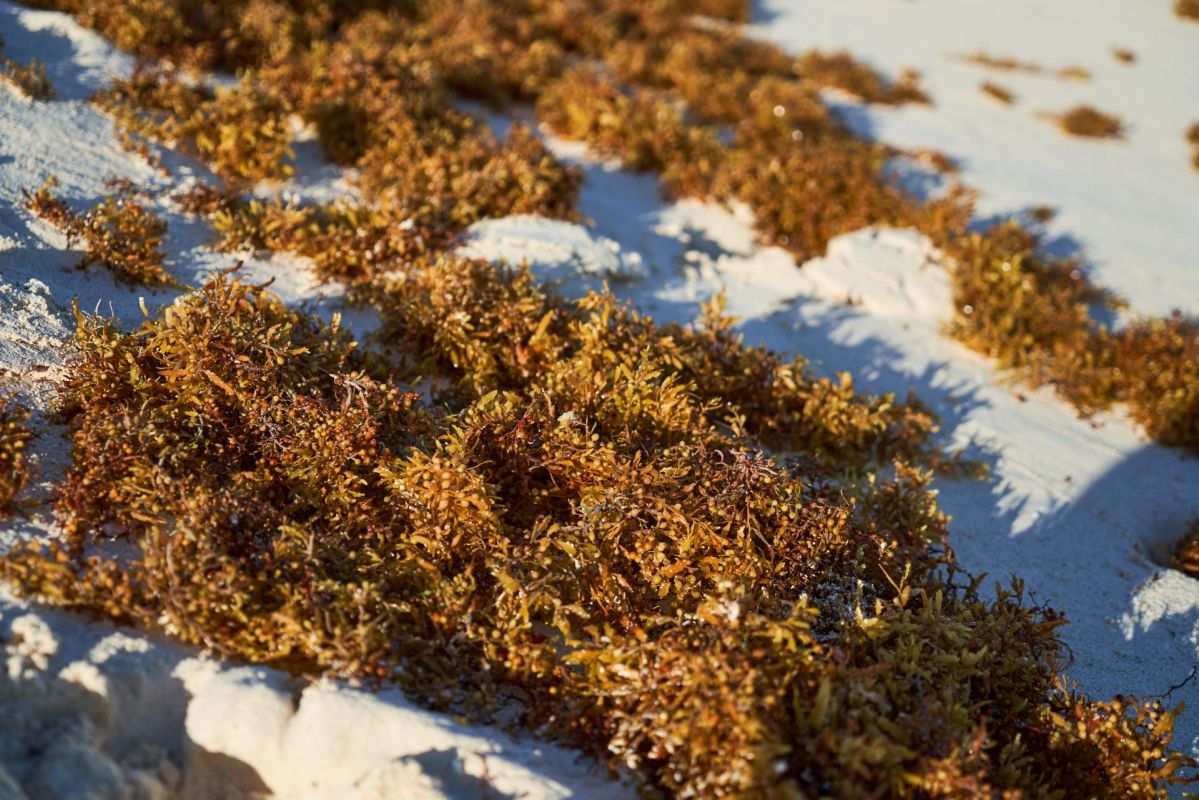The findings from a new study conducted by researchers at Florida Atlantic University (FAU) and published in Water Research sound like something out of a science-fiction novel.
The data has experts fearing that plastic debris floating in masses of the seaweed sargassum is a breeding ground for flesh-eating Vibrio bacteria, which cause vibriosis.
What's happening?
Masses of sargassum have become larger and are washing ashore more often, meaning they will inevitably come into contact with humans on beaches.
Researchers worry that the increase of plastics in our waters, along with the boom of blooming sargassum, could provide a perfect breeding ground for Vibrio.
"Our lab work showed that these Vibrio are extremely aggressive and can seek out and stick to plastic within minutes," Tracy Mincer, one of the lead authors of the study, told The Hill. "We also found that there are attachment factors that microbes use to stick to plastics, and it is the same kind of mechanism that pathogens use."
Why is this cohabitation concerning?
This potential "pathogen storm" could have severe implications for marine life and public health.
Vibrio bacteria are the leading cause of death in humans from the marine environment, and an article about the FAU research said some of the data showed that sargassum washed up on beaches appears to "harbor high amounts of Vibrio bacteria."
The Centers for Disease Control and Prevention estimates that vibriosis causes about 80,000 illnesses and 100 deaths in the United States annually. The disease is most often contracted by consuming raw or undercooked seafood or by getting seawater in an open wound, and most infections occur from May through October, when water temperatures are warmer.
Rotting beached sargassum also lets off hydrogen sulfide, which can burn your eyes, nose, and throat and cause breathing issues for people with asthma.
Health experts are advising beachgoers to stay away from sargassum if they encounter it on beaches.
"I think the most important thing for people is to look out, open your eyes, and understand what you're seeing around you in terms of nature and how we fit into it," said Frank Muller-Kager, an oceanographer at the University of South Florida. "We depend on it, if we take care of it, we can make it better for ourselves."
While the study focused only on the Vibrio bacteria, the Plastic Soup Foundation cautions it may be "only the tip of the iceberg when it comes to human pathogenic bacteria on floating plastics.
What can I do to keep plastic out of the ocean?
Plastic is a dominant form of ocean pollution, with an estimated 14 million tons ending up in the ocean every year. While there are efforts to clean it up, we can do plenty as individuals to keep new plastic from ending up in the water.
Organizations like The Ocean Cleanup have installed trash interceptors in some of the most highly polluted rivers in the world — in Indonesia, Malaysia, the Dominican Republic, Vietnam, and the U.S. (California) — to stop plastic garbage before it reaches our oceans. The organization says it wants to halt 80% of riverine plastic from being carried into our oceans in a five-year span. It is also attacking plastic that has already reached the oceans with massive-trash collecting vessels that can swoop up as much as 55,000 pounds of debris at a time.
As individuals, we can move away from single-use plastics by switching to a reusable water bottle or a plastic-free detergent. Most importantly, we can talk to our friends and families about the issues that plastic pollution causes for our health and ways to help.
Join our free newsletter for cool news and cool tips that make it easy to help yourself while helping the planet.









